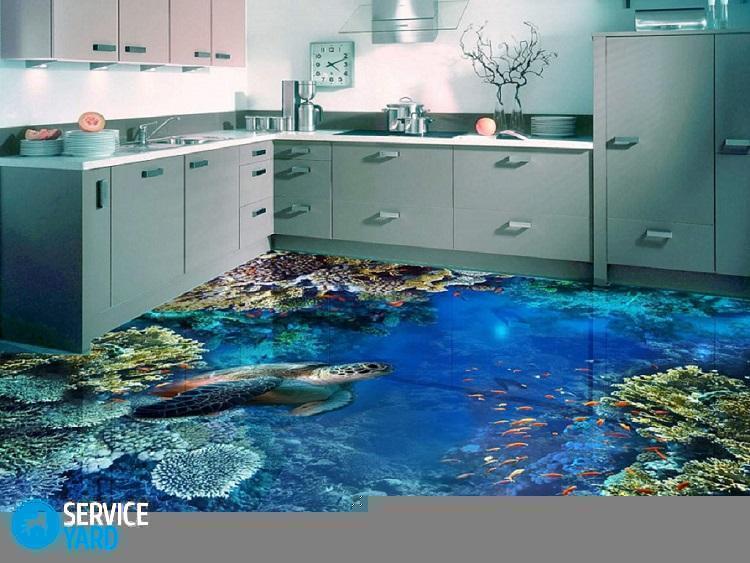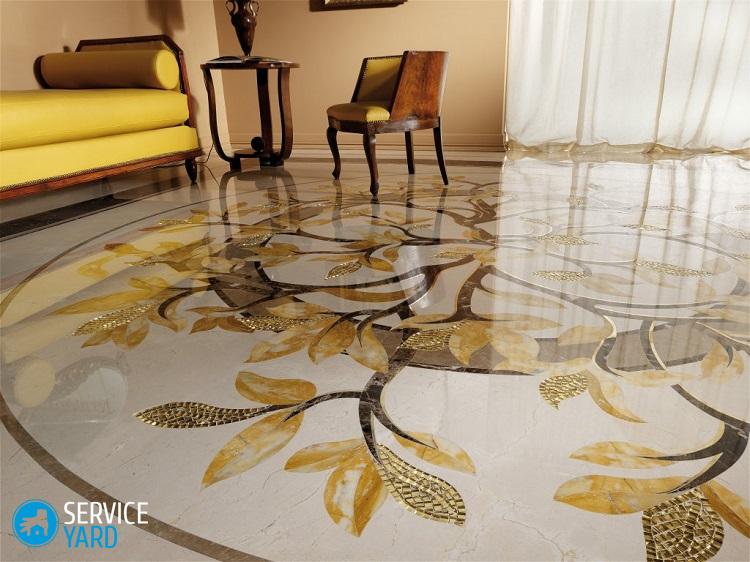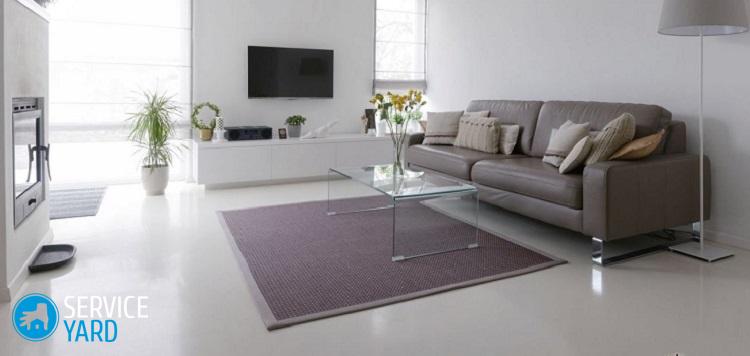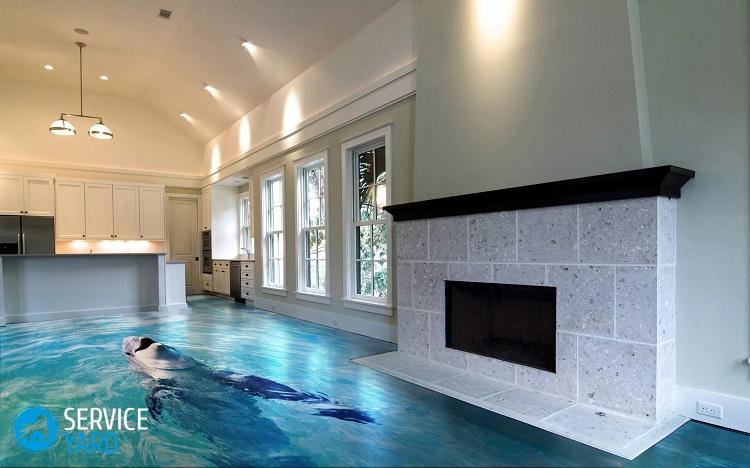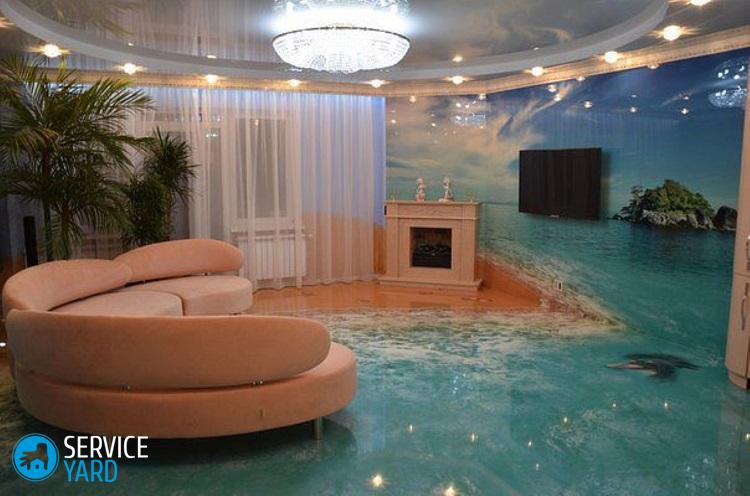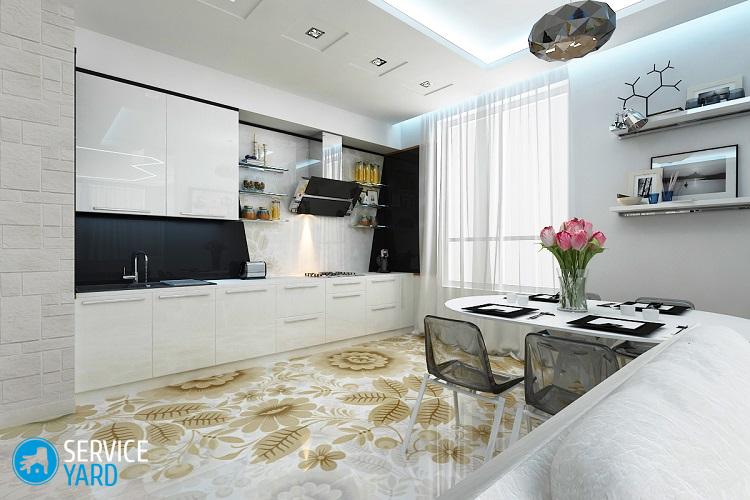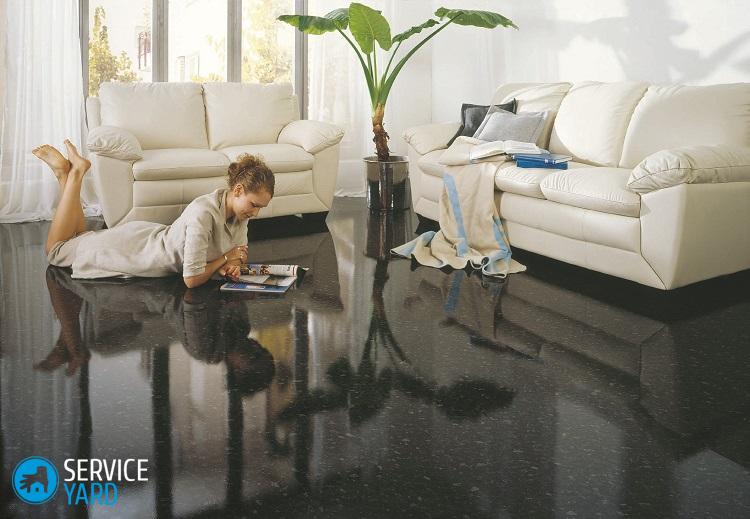How to fix the bulk floor if it is unevenly poured?

Nowadays, self-leveling mixtures are often used enough to get a perfectly even, flawless base for laying flooring. Unfortunately, the result obtained does not always live up to our expectations. Today we will find out what to do if the bulk base is swollen or cracked, how to fix the bulk floor if it is unevenly poured, because it is not difficult to correct such errors, but nevertheless, maximum attention should be paid to this point.
to contents ↑The main causes of defects on the finished bulk floor
To fill the floor completely hardened, you must wait at least a week after pouring. Then, for another two to three weeks, the cementitious compound, cement or gypsum will gain the necessary level of strength. That is, the situation with defects on the surface in the form of swelling, cracks, tubercles, pits and irregularities will only worsen every day.
Important! The quality of the coating depends directly on the time of kneading, the accuracy of the dosages, the aging time of the solution, the selected technique of the bay, taking into account the most important factors. As practice has shown, most of the problems arise due to insufficient or incorrect preparation of the foundation.
Before you level the bulk floor, you should find out where the defect came from. The base foundation must be required:
- Durable. The bulk floor will not adhere to the base if dust or sand crumbles from the screed. Peeling pieces also do not increase adhesion, and stronger levels can simply tear off the weakest areas.
- Smooth and smooth. A defect is a porous, rough, uneven floor. In the process of setting and shrinkage of the cement mortar, the bulk layer duplicates the topography of the base, therefore, there are flows, cracks, pits, craters on it. Porosity is a sure sign of a poorly dried base, which begins to draw water from the mixture, thereby reducing the strength of the bulk floor.
- Dry. A high level of residual moisture provokes multiple damage to the already hardened self-leveling composition, the formation of coils and voids.
- Clean. Any dirt adversely affects the adhesion of the base and solution. If you do not thoroughly clean the surface at the very beginning of the fill, the floor will begin to crack, peel, swell.
If you are one hundred percent sure that you have prepared the surface correctly, then check out other possible problems that could provoke the appearance of defects.
to contents ↑Additional causes of bulk floor deformation
As we have already found out, in order to choose the right way to fix the bulk floor, you need to understand where the problem came from, otherwise you can go the wrong way and choose the wrong tactics for dealing with a defect that has arisen.
The most common mistakes when filling a bulk floor:
- Lack of water. In this case, the plaster or cement mortar after setting simply does not have enough water to gain final strength. As a result, the floor will constantly dust, collapse, and crumble.
- Excess water.Many additives for water retention do not cope with their functions, due to which the bulk composition is completely or partially delaminated almost immediately after pouring.
- Use to knead too powerful mixer. Excessively intensive involvement of air in the solution leads to the fact that it begins to foam, and even a needle roller is not able to correct the situation, as a result, the surface becomes porous.
- The base was not primed. Due to the soil, the foundation is not only strengthened. The degree of how it absorbs moisture over the entire area is evened out. If this stage is ignored, then the solution will not flow well, it will turn out to be fragile in places with many defects.
- Slowed down rate of solution production. The mixture, sealed with water, can survive no more than 20-40 minutes. When the solution has already set, then it will be impossible to level it, thickenings, flows, irregularities will appear.
- The floor was not worked out after filling with a rule or squeegee. Prior to the moment of complete drying, it is necessary to disperse the bulk composition with hand tools so that pits and knolls do not appear.
- Lack of deaeration. Air is removed from the solution by rolling with a needle roller. If this is not done, then multiple craters will arise, the surface will turn out to be not smooth, uneven.
- Included heating system, drafts. The top layer of the bulk floor dries out too quickly due to intensive ventilation and local temperature increase. Therefore, it begins to crumble with sand, dust.
- High humidity. Drying times are lengthened, curing slows down.
- Decrease in humidity and temperature indicators. The hardening period of the mixture increases significantly, and fragile sections form.
If during the pouring process you nevertheless made one of the described errors, you will have to tackle it. How exactly to do this - we will tell further.
to contents ↑How to fix defects of a self-leveling floor on your own?
All the shortcomings of the finished bulk floor are divided into the following groups:
- Local. You can eliminate them without any special material and labor costs. These include cracks, pits, delaminations, drops, craters, and flows.
- Serious. In such cases, the coating is completely removed and a new one is poured. This can be a complete detachment, a lot of cracks along the entire floor surface, a network of voids under the bulk base, porosity along the entire depth of the layer.
Let's look at the first group of defects, because you can cope with them on your own, the main thing is to correctly determine the type of problem, choose what and how to grind the bulk floor.
Cracks
Such a defect can be eliminated by means of a quick-drying repair mixture.
The following actions must be performed:
- Slightly widen surface tears on the bulk floor.
- Remove all dust.
- Primer problem areas.
- Fill cracks with quick-drying compound or putty.
Important! If the cracks are too deep, it is recommended to additionally use metal building brackets that look like corrugated paper.
It will be necessary to carry out repairs in this way:
- Extend the fault with a grinder.
- Make another compensation incision perpendicular to the main seam, depending on its length.
- Vacuum the entire repair area.
- Insert the staples, fill the defect with an epoxy quick-drying putty or liquid mixture.
- Align with a spatula with smoothing movements.
Delamination of the surface
Any experienced repairman who deals with flooring knows for sure that it is impossible to lay on the floor with coiled, swollen areas. As a result, the base will definitely crack, collapse, the locks on the floor or laminate will begin to crumble and creak. Such a defect is not difficult to eliminate.
Perform the work according to the scheme:
- Use a crowbar or puncher to remove damaged areas.
- Thoroughly clean the surface of dust.
- Primer.
- Fill the exfoliation with a bulk floor diluted in the required proportion.
Swings, pits
It is not difficult to deal with such phenomena. Minor recesses are eliminated as follows:
- They are filled with putty, cement-sand mixture or bulk solution.
- Then they are smoothed with a wide spatula or trowel.
Important! Deep holes are brought to zero, they must be leveled to the highest point by a non-shrink, self-leveling floor on a gypsum-cement or gypsum basis.
The scheme of work looks like this:
- First of all, the floor is primed.
- Next, the solution is poured.
- The surface is smoothed by the rule.
- All surpluses are removed with a tool at hand.
Important! Many experts recommend smoothing such defects with thin-layer tile glue. It has a high level of adhesion with mineral bases and can be used as a hardening component.
Sagging, small irregularities
The best way to eliminate thickening and tubercles is grinding. To do this, use a tape or flat grinder or a grinder with an abrasive wheel. In this case, the grain size is selected individually. Cement compounds are grinded with a concrete machine. That is, when faced with such defects, it is important first of all to choose correctly what to grind the bulk floor with.
Important! Working with grinding units implies the formation of a large amount of dust, clogging the tool, impairing visibility. Therefore, it is imperative to use a nozzle to connect to a construction vacuum cleaner.
Craters
They appear due to insufficient deaeration or a high level of residual moisture of the base. So, if there are no pores on the floor, there are no voids under it, then such craters are simply filled with putty or filled with a self-leveling mortar. In this case, you do not need to do a deep breakdown, just a little to clear the problem area.
to contents ↑What compounds are used for leveling bulk floors?
All self-leveling compositions include finely divided special fillers, which have a size of up to 260 microns, due to which the finish surface becomes smoother than an ordinary screed. The connecting element, as a rule, is cement or gypsum, while mineral fillers and modifying polymers improve the quality of the mixture itself, make it more elastic, increase its adhesion and self-leveling effect. Choosing what to grind a bulk floor with your own hands, pay maximum attention to the choice of mixture for pouring.
Rating of the best self-leveling modern mixtures:
- Products of the Knauf company. It produces the highest quality mixtures based on high-strength gypsum, which has a special modifying additive. In addition, the manufacturer adds fine quartz sand to the mixture, improving their adhesion to the base.
- Mixtures of Vetonit. The products have high technical characteristics due to the presence of special additives in the composition. The base is perfectly smooth, it hardens very quickly.
- The company "Horizon". It produces cement-sand mixtures, which are in demand in the manufacture of screed underfloor heating and the elimination of significant defects of the bulk floor.
- Products of the Volma company. Its mixtures are characterized by good thermal insulation and increased sound insulation. Self-leveling compounds from this company are used in a variety of rooms, without exception, even where there is contact with water.
Stock footage
Do not spare the time and effort to correct these shortcomings. Lay the floor coverings exclusively on even and high-quality substrates; otherwise, you will simply throw money away. If you ignore the preparatory measures, then after a few years, the finishing material will simply begin to crumble, exfoliate, disintegrate.
- How to choose a vacuum cleaner taking into account the characteristics of the house and coatings?
- What to look for when choosing a water delivery
- How to quickly create comfort at home - tips for housewives
- How to choose the perfect TV - useful tips
- What to look for when choosing blinds
- What should be running shoes?
- What useful things can you buy in a hardware store
- Iphone 11 pro max review
- Than iPhone is better than Android smartphones



